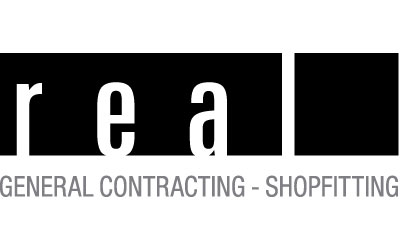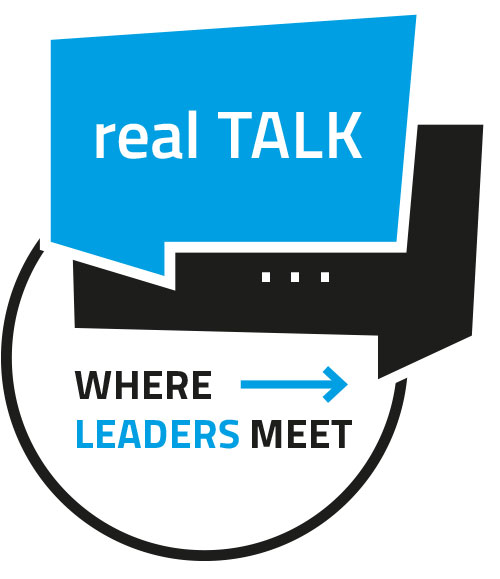Our eyes are the window through which we see the world. We see the world as it really is – at least for ourselves. After all, what we see is already an area selected by our brain. We see what seems most relevant to us first. If we are hungry, we see restaurants everywhere when we walk through the city. If we are full, our focus moves to completely different things.
T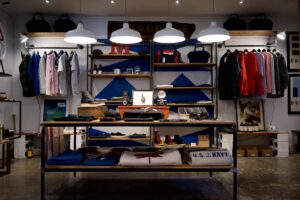 his basic principle can also be applied to shop fittings. The first impression counts. Customers should feel comfortable from the first moment and experience a pleasant atmosphere. A company must fulfill factors that are relevant to the customer. These factors are not influenced by anything other than the shop fittings. The store design reflects one’s own company and thus anchors – albeit often unconsciously – a customer image of the brand. If the customer is already convinced by the design, half the way to product sales is already done. The products themselves can also be positioned in a higher quality and more attractive way through the use of certain materials and colors. To create this brand space, designs must first be created using different materials and elements, and then a coherent design must be developed together. With the latest techniques such as 3D rendering and VR experiences, customers can experience a realistic image of their shop as early as the planning phase. On the one hand, this makes it easier to select materials and elements, but it also leads to time and cost savings, as there are fewer change requests in the process flow.
his basic principle can also be applied to shop fittings. The first impression counts. Customers should feel comfortable from the first moment and experience a pleasant atmosphere. A company must fulfill factors that are relevant to the customer. These factors are not influenced by anything other than the shop fittings. The store design reflects one’s own company and thus anchors – albeit often unconsciously – a customer image of the brand. If the customer is already convinced by the design, half the way to product sales is already done. The products themselves can also be positioned in a higher quality and more attractive way through the use of certain materials and colors. To create this brand space, designs must first be created using different materials and elements, and then a coherent design must be developed together. With the latest techniques such as 3D rendering and VR experiences, customers can experience a realistic image of their shop as early as the planning phase. On the one hand, this makes it easier to select materials and elements, but it also leads to time and cost savings, as there are fewer change requests in the process flow.
To tackle such a project, however, one must first ask oneself the following questions:
- With which colors, shapes and lighting do I want to create which feelings in the customer?
- How should the shelves be arranged so that my products are shown off to their best advantage?
- How can I use design to attract the customer’s attention and influence his or her decisions?
Once these questions are answered, a cohesive store design can be created. For a better understanding, here is a brief look at the selection of elements and materials in shop design.
Shop fitting elements and alignment
T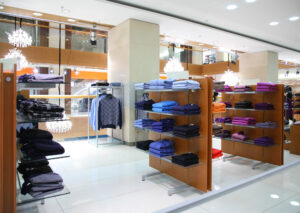 he choice of elements and materials in shop fitting is large. However, if you already have the goal in mind, the abundance can already be reduced to a limited selection. Depending on the product range, different elements and construction methods are recommended. Here, too, there are huge differences in quality. Depending on the shop equipment and products offered, avoidable bargains can later turn out to be expensive bad buys. Professional advice and planning are therefore essential in this area.
he choice of elements and materials in shop fitting is large. However, if you already have the goal in mind, the abundance can already be reduced to a limited selection. Depending on the product range, different elements and construction methods are recommended. Here, too, there are huge differences in quality. Depending on the shop equipment and products offered, avoidable bargains can later turn out to be expensive bad buys. Professional advice and planning are therefore essential in this area.
Product presentation is half the battle. If you use elements in a sales-psychologically clever way, you will have already won over the customer during the shop fitting. Attention should be paid to the customer’s needs, wishes and habits. If the customer is convinced by the design and product, he will pass on this feeling to the outside world. Shop fitting must therefore also be geared specifically to the target group’s interests and perceptions.
General elements of sales psychology must be taken into account. For example, when entering the store, the customer is usually first interested in the items to the right to center in front of him. This knowledge can be used to position desired items in such a way that they receive more attention than others. On the other hand, light accents or colors can be used to draw attention to products that are somewhat off to the side or not in direct view. Through such small but effective tricks, customers can be made to travel out of the natural stream and take unusual paths to selected products. Especially in the digital age, the benefits of shopping locally must be pushed to their maximum to avoid losing customers. With a shop fitting expert, these very advantages can be elaborated and showcased in the best possible way. Proper shop fitting should guide customers through the store and be an aid to their shopping, much like salespeople. Customers often feel disoriented when they want to “just browse a bit”. By setting accents and shop fitting elements, they feel they are in good hands and are happy to be guided from product to product.
Materials used
T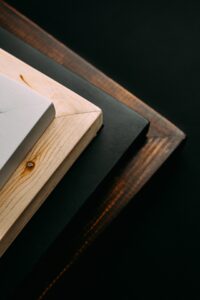 he diversity of materials used in shop fitting is manifold. However, depending on the use and product selection, only certain ones may be suitable. Typical materials are wood, metal, glass or rocks such as marble, slate, granite and the like. In addition to these traditional and proven materials, new, innovative and unusual materials are always used in modern shop fitting. These not only bring a breath of fresh air to the design, but usually have secondary benefits such as cost or material savings or to protect the environment. An example of this would be plastic stone. What sounds contradictory at first is actually a compound of volcanic rock, coral, sand grains and melted plastic floating through the world’s oceans. However, the material is exceptionally well suited for shop fitting, as it is used to create durable and colorful building materials. In addition, plastic is fished out of the oceans in the process and good is done for the environment. Materials like these are not only visually and ecologically suitable, but can also be used for advertising purposes due to their uniqueness. Materials such as “paper floss,” easily formable veneer wood, or Deton, a concrete-like material used to 3D print elements, fall into the same category. A high degree of customization, cost efficiency, and environmental benefits make these modern materials particularly attractive for shop fitting.
he diversity of materials used in shop fitting is manifold. However, depending on the use and product selection, only certain ones may be suitable. Typical materials are wood, metal, glass or rocks such as marble, slate, granite and the like. In addition to these traditional and proven materials, new, innovative and unusual materials are always used in modern shop fitting. These not only bring a breath of fresh air to the design, but usually have secondary benefits such as cost or material savings or to protect the environment. An example of this would be plastic stone. What sounds contradictory at first is actually a compound of volcanic rock, coral, sand grains and melted plastic floating through the world’s oceans. However, the material is exceptionally well suited for shop fitting, as it is used to create durable and colorful building materials. In addition, plastic is fished out of the oceans in the process and good is done for the environment. Materials like these are not only visually and ecologically suitable, but can also be used for advertising purposes due to their uniqueness. Materials such as “paper floss,” easily formable veneer wood, or Deton, a concrete-like material used to 3D print elements, fall into the same category. A high degree of customization, cost efficiency, and environmental benefits make these modern materials particularly attractive for shop fitting.
Factors in the selection
Once the materials have been determined and a shop fitting concept has been created, there are other factors to consider for the final shop design. In particular, points such as customizability, expandability, transferability to other stores or re-design come to the fore. A modular structure, which is common in shop fitting, ensures quick and easy assembly and disassembly as well as the possibility to exchange individual elements. Once suitable elements and materials have been found, it is possible to move on to production. Since the cost of prefabricated parts is fixed, the design is easily scalable and project costs are manageable.
Areas of application for Shop Fitting
Shop Fitting can be applied in all areas of retail and beyond. Whether it’s a jewelry store or an optician, the benefits are felt in all segments.
Shop Fitting as a general contractor
As a general transferee, shop fitting is part of the daily routine. Through the many projects carried out, there is a knowledge and overview of elements and materials, as well as ways to best stage them. The project sequence is broken down into the following steps.
Planning
The planning process of the shop fitting is carried out entirely by the general contractor. If initial design drafts are available, these can be discussed with the customer regarding the next steps. Here, it is possible that the customer likes an already existing design, as well as an individual adaptation in case of special requests to the design concept.
Design
The design should be sustainable and planned for the long term, so that the design can be easily updated, elements can be quickly replaced and adapted to new trends.
Execution
The general contractor takes care of the complete construction. The various trades are commissioned and supply chains are checked. This saves the client a lot of work. Queries or requests regarding shop fittings can be clarified with the general contractor, as he keeps track of the project. Upon completion, the project is handed over to the client on a turnkey basis.
Replication
Once the processes have been carefully and successfully gone through, a shop fitting design can be easily transferred to other stores and locations. This saves a lot of planning work and thus costs and time. In addition, it ensures a consistent brand image. The customer can experience the same shopping experience at different locations.
Challenges for shop fitting
D igitalization does not stop and supply chains as well as parcel services are constantly optimizing their processes. Shopping over the Internet is convenient and easy. On a well-designed website, a company’s corporate design is easy to extract and products are easy to promote. This makes it all the more important to bring these feelings and impressions to the offline world as well. Designs need to be meaningful and captivating to lure customers into the physical shop as well. Consequently, stores are also going digital. Screens, video walls or interactive terminals are increasingly used in shop fitting. They complement the presentation of goods and thus ensure a fusion of the online and offline worlds.
igitalization does not stop and supply chains as well as parcel services are constantly optimizing their processes. Shopping over the Internet is convenient and easy. On a well-designed website, a company’s corporate design is easy to extract and products are easy to promote. This makes it all the more important to bring these feelings and impressions to the offline world as well. Designs need to be meaningful and captivating to lure customers into the physical shop as well. Consequently, stores are also going digital. Screens, video walls or interactive terminals are increasingly used in shop fitting. They complement the presentation of goods and thus ensure a fusion of the online and offline worlds.
Image copyright: Paha_L, nmedia, Clark Street Mercantile, Amr Taha, Xianjuan HU
